One of the things I appreciated most about St. Kitts was the sophisticated taxi services on the island. There were plenty of taxi drivers everywhere to shuttle you between various places on the island, and they operate a prix-fixe fare system in which trips between popular points of interest are standardized.
Just landed at SKB and need to get to the Marriott Resort St. Kitts? That’ll be US$16, no more, no less – it’s even posted as a sign at the airport! (Of course, tips are always appreciated). It’s US$12 between the Marriott and downtown Basseterre, US$24 to get to Turtle Beach at the end of the Southeast Peninsula, and so on. Sure, you can bargain, but personally I thought that the system works brilliantly for visitors and greatly limits the potential of being ripped off.
We had to familiarize ourselves with the taxi prices on our fourth day on the island, when we hit up our resort’s tour desk. We had heard that the Brimstone Hill Fortress National Park was a UNESCO World Heritage site and one of St. Kitts’s must-sees, and we wanted to hail a taxi to bring us there.
The cab ride from the Marriott to Brimstone Hill would have been US$28 per direction, so the staff member at the tour desk advised us that we’d might as well make it a “Half Island Tour” for US$60 in total. That would give us 2.5 hours with a taxi driver who’d bring us to Brimstone Hill via a place called Romney Manor, before taking us back to Basseterre and showing us around there.
We liked the sound of this, and before long we were on board one of the waiting taxis, heading inland.
Our taxi driver pointed out the notable sites on our way to Romney Manor. We passed by the Ross University School of Veterinary Medicine, the local Carib brewery, and St. Thomas Anglican Church, which our driver noted was the oldest church in the Eastern Caribbean.
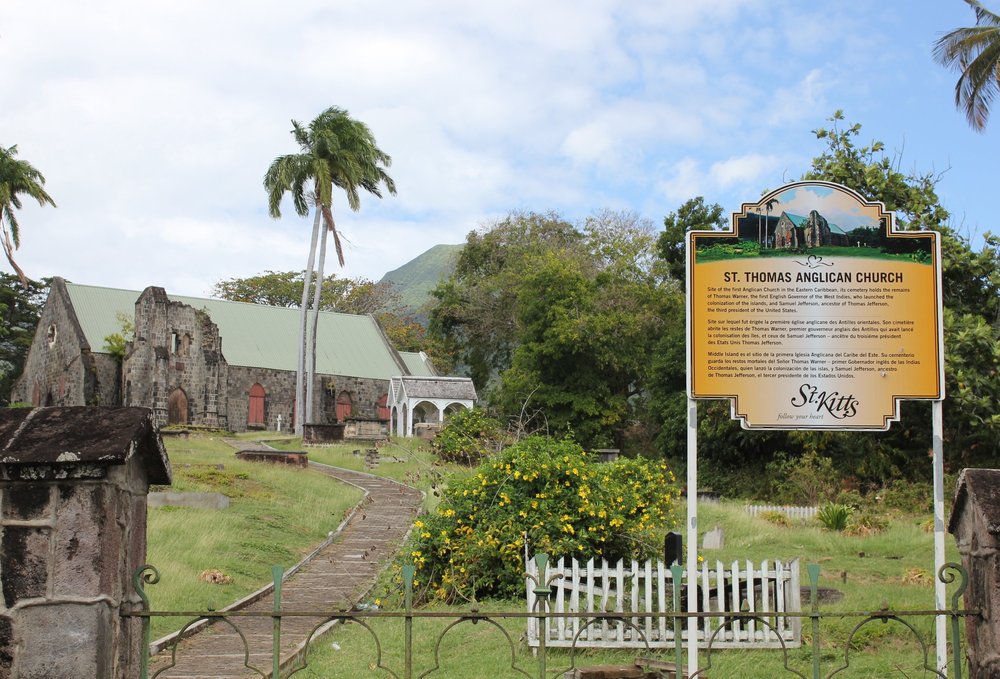
St. Thomas Anglican Church
We arrived at Romney Manor after about 20 minutes, where our driver stopped and waited for us, letting us know we had approximately half an hour to explore the place. Admission tickets were US$3 per person.
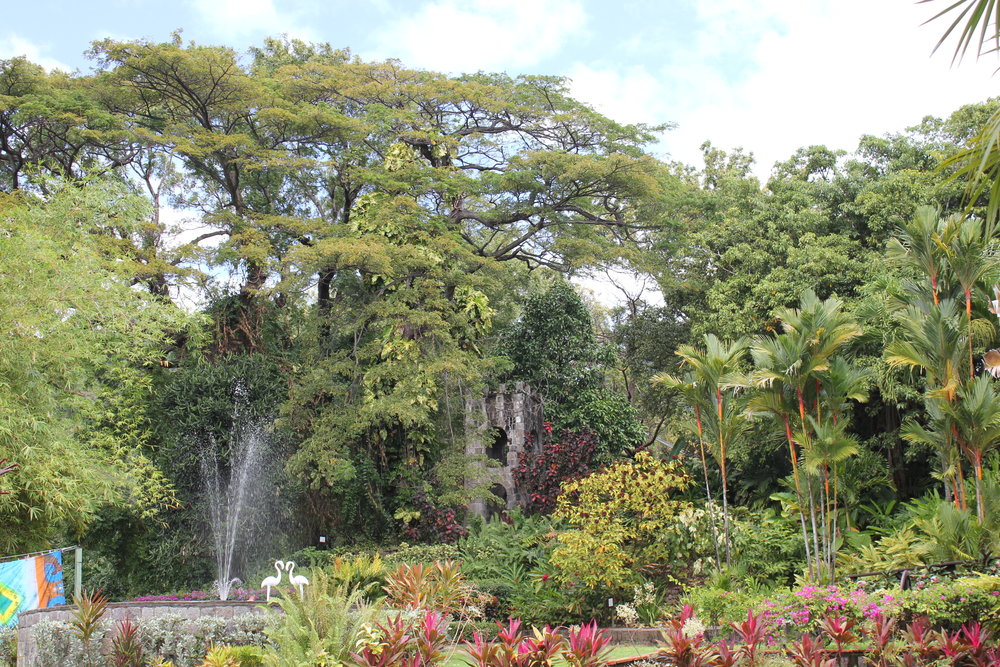
Romney Manor – Gardens
Romney Manor used to be a sugar plantation and is now a quarry-shaped set of paths and flowerbeds, with stone steps connecting the many levels of its quiet, intimate gardens. It’s hard not to be impressed by the absolutely gigantic 350-year-old saman tree watching over the area, its grandiose nature bestowing a touch of spirituality upon your stroll through the grounds.
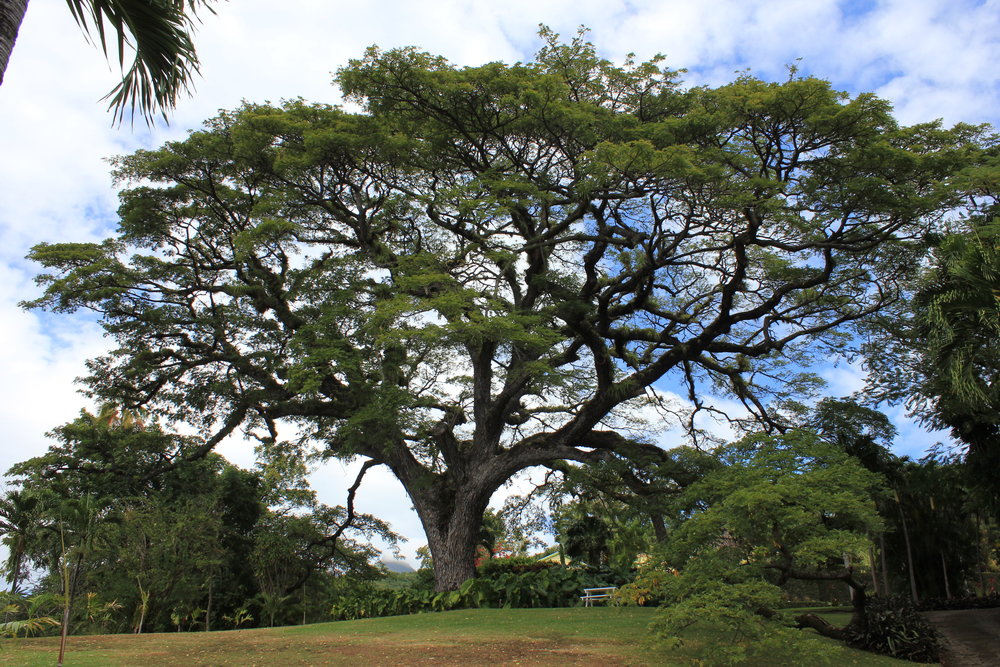
Romney Manor – Saman tree
It’s also home to the workshop and flagship store of Caribelle Batik, an acclaimed maker of batiks with distinctive Caribbean designs.
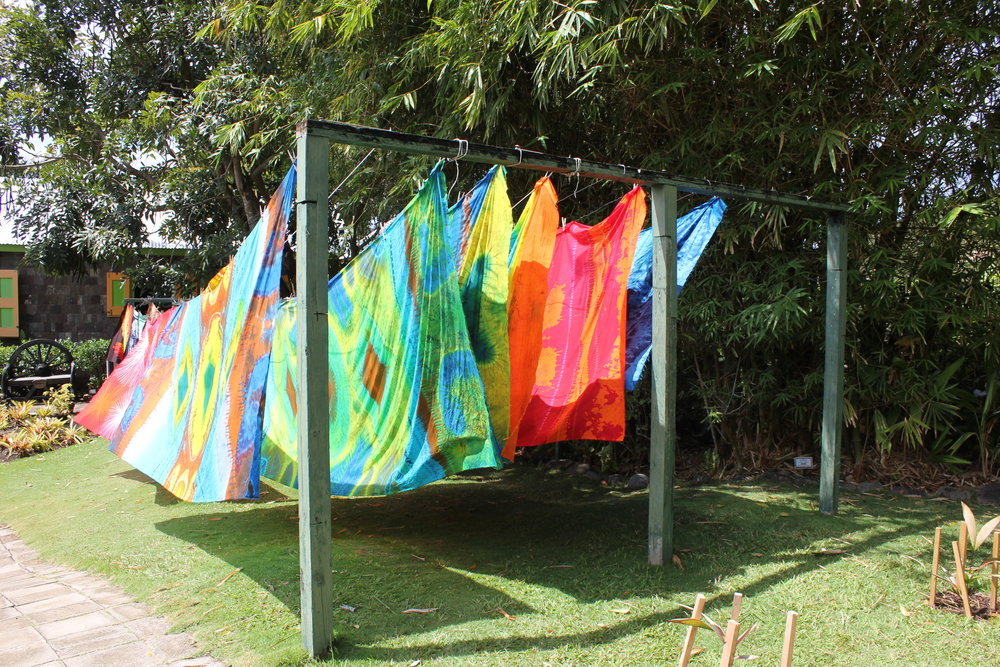
Romney Manor – Caribelle Batik display
It was another 15-minute drive along the coast before we arrived at Brimstone Hill. After a long and winding drive up to the fortress, we paid US$10 per person for our tickets and US$5 for an audioguide that we shared. Our driver gave us about 45 minutes to explore the Brimstone Hill Fortress National Park.
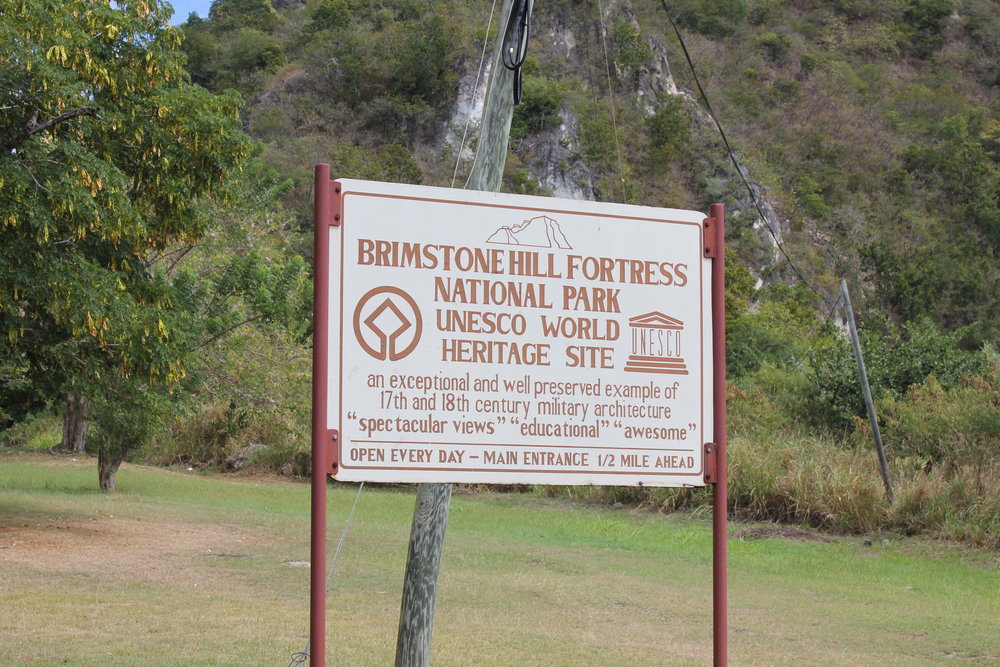
Brimstone Hill Fortress National Park – Sign on approach
There was a small hilltop in the open area at the base of the fortress, which provided some incredible views of the surrounding villages and the Caribbean Sea.
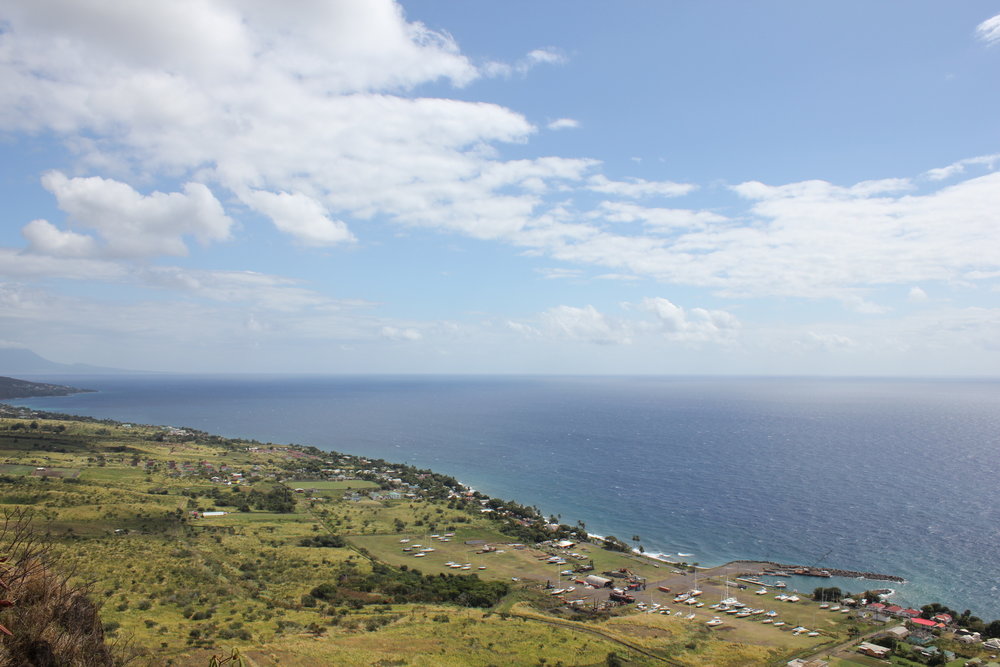
Brimstone Hill Fortress National Park – Views of Caribbean Sea
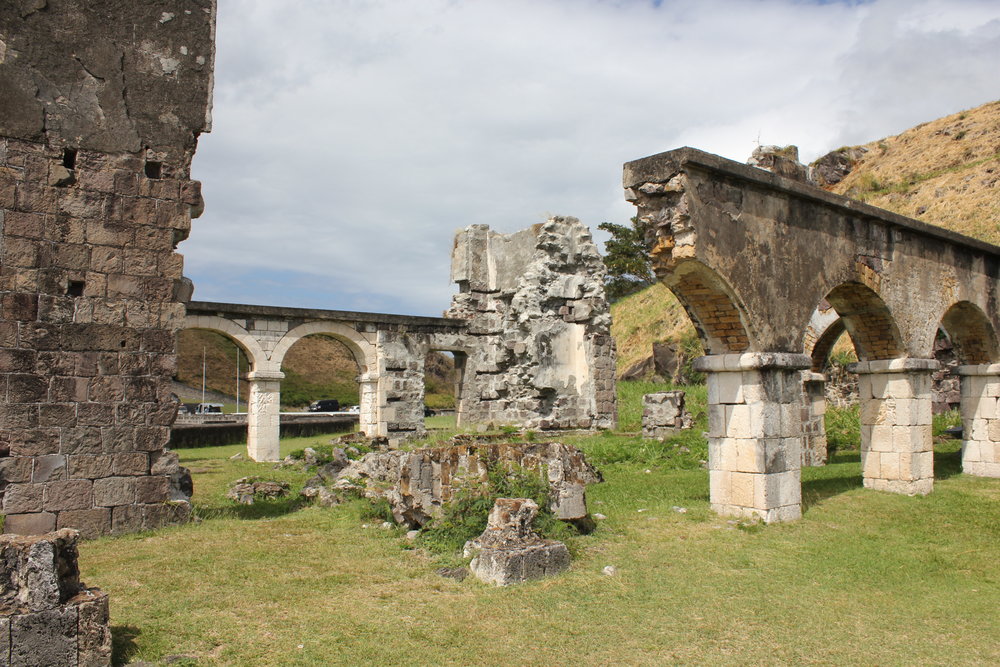
Brimstone Hill Fortress National Park – Ruins
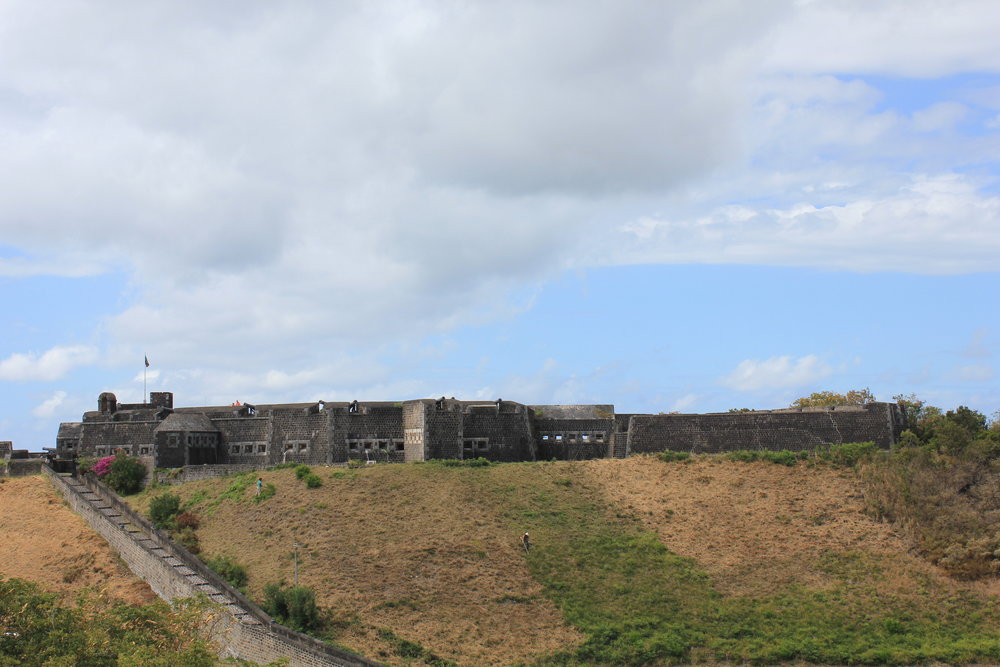
Brimstone Hill Fortress National Park – View of fortress from hilltop
As we climbed the steps to look at the fortress proper, we absorbed some background information from the audioguide. Designed by British military engineers and built and reinforced by slaves over the course of 100 years, the fortress played a central role in several Anglo-French scuffles and conflicts over control of the island in the 17th and 18th centuries. After the British abandoned the fort in 1853, restoration began in the early 20th century, and it was declared a World Heritage Site by UNESCO in 1999.
The view from atop the fortress was even more stunning, and you could clearly see the Dutch islands of St. Eustatius (affectionately known as “Statia” among the locals) and Saba over the water in the distance.
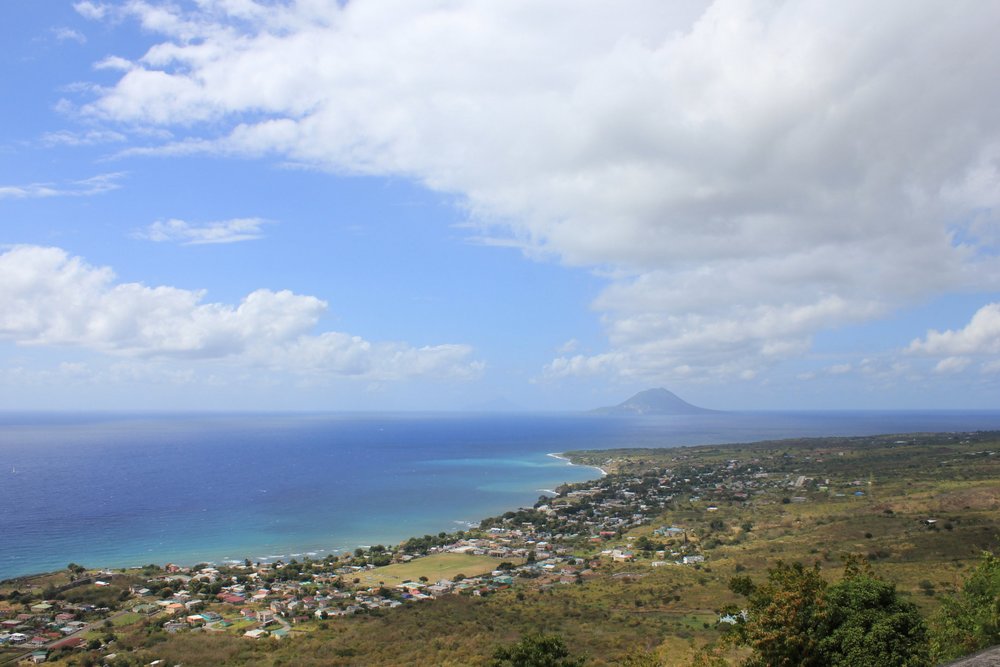
Brimstone Hill Fortress National Park – View of Sint Eustatius and (very faintly) Saba
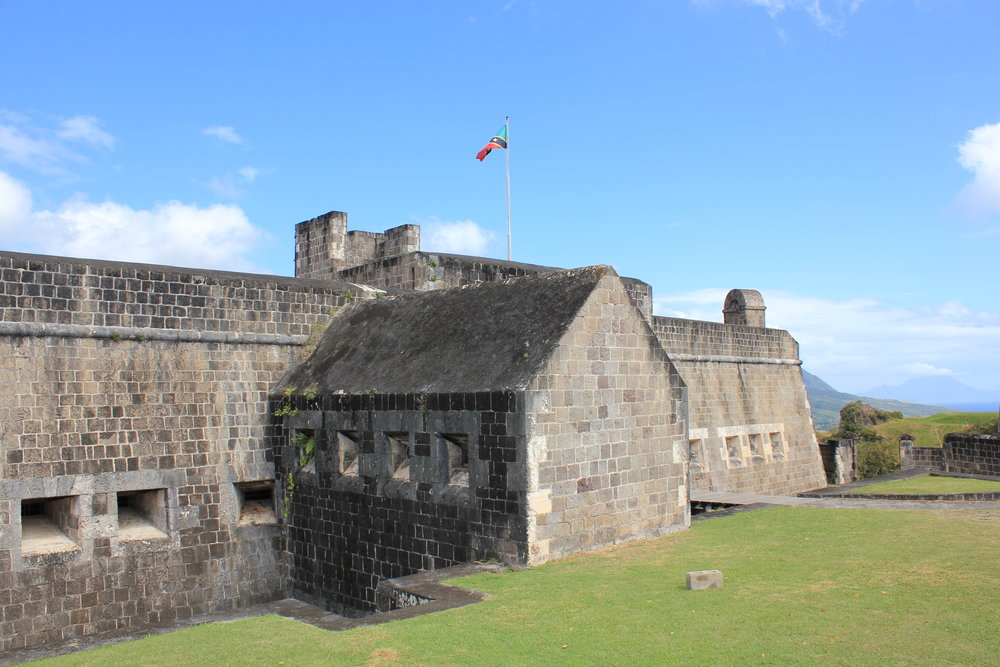
Brimstone Hill Fortress National Park – Fortress building
There were also various exhibits set up in the interior part of the fort, showing what life was like for soldiers stationed at Brimstone Hill many centuries ago.
I would’ve loved to spend more time exploring the fortress and admiring the views, but we were on a tight schedule and so hopped back onto our cab for the long drive back to Basseterre. Our driver wanted to charge us extra for going over our 2.5-hour allotment, so I asked him to just drop us off in Basseterre, since we wanted to grab some food anyway.
Now, this wasn’t our first time in the capital: on the second day of our trip, Jessica and I had actually walked for an hour all the way from our resort to Downtown Basseterre, hoping to explore the city a little bit. There was just one problem: it was a Sunday, and nothing was open. You see, according to an ice cream shop owner, whose establishment was the only one we found with any sign of life, everyone goes to church in the morning on Sundays and then stays home with their families. So we wandered around a bit on streets that were quite literally empty before catching a cab back to the resort, sorely disappointed with ourselves. Oops!
Things were very much different today, with the main thoroughfares bustling with activity. We walked around the festival-like Port Zante area for a while, looking at the souvenir shops well-positioned to make a quick buck off visiting cruise ship passengers.
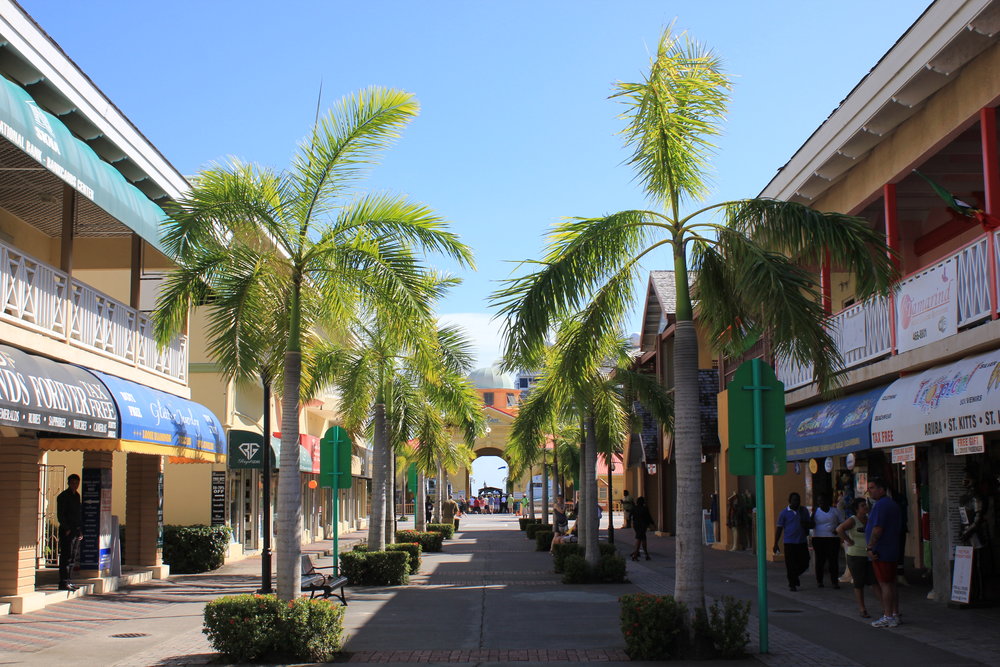
Downtown Basseterre – Port Zante
Then we walked a few more blocks inland, searching for a restaurant. We ended up getting some Jamaican patties at Island Flavours Restaurant and sampling the local brew, whose factory we had passed by earlier on our cab ride.
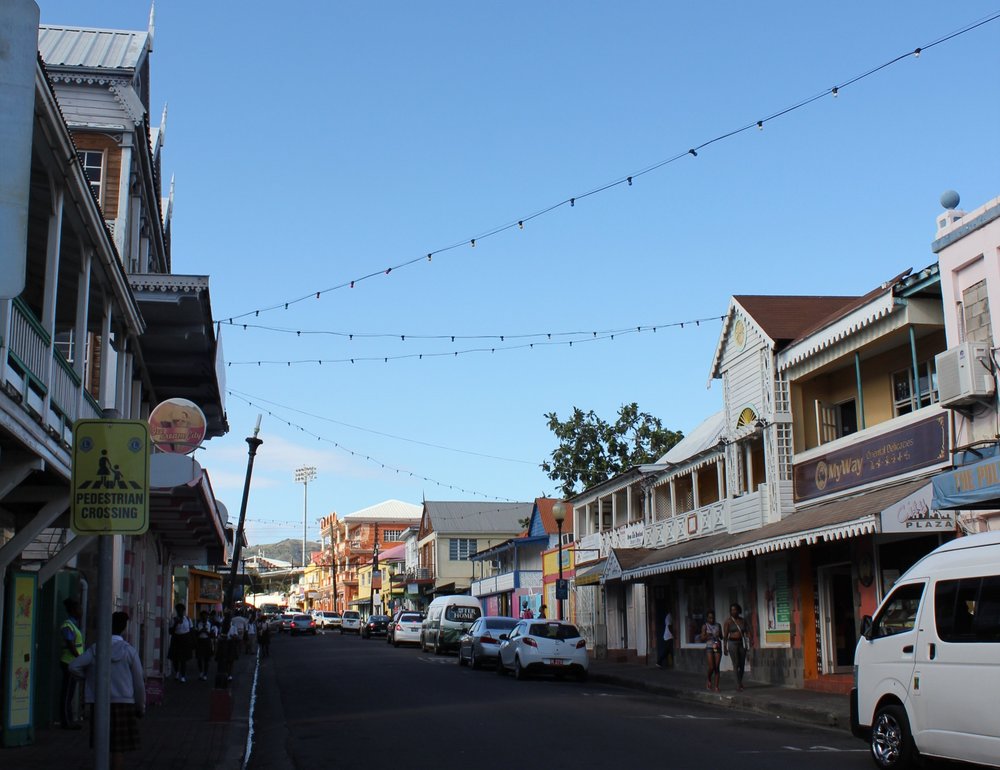
Downtown Basseterre – Main street
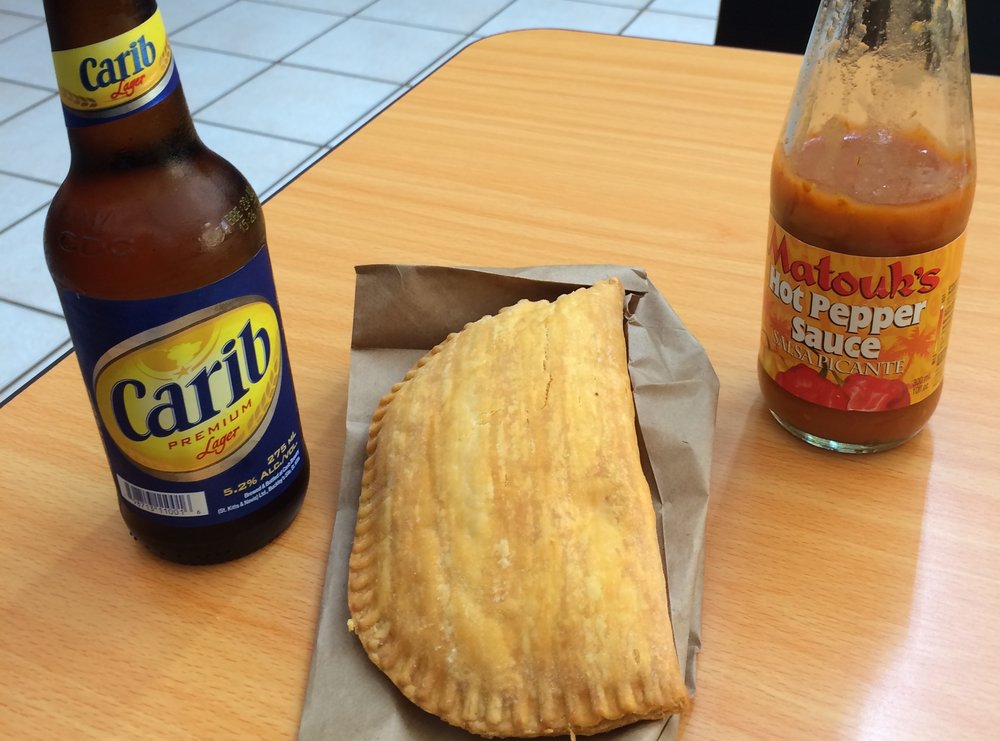
Recharging our batteries
I asked the staff at the restaurant if there was anything worth seeing in Basseterre, though she said there was little to do in the city itself. So Jessica and I just wandered around for a little bit – it’s something we love to do, exploring unfamiliar places on foot, without a specific goal in mind, letting the contours of the city guide us towards something unexpected. In this instance, we passed through a small park, admired the interiors of a local church, and ended up at the clock tower at the city’s central roundabout.
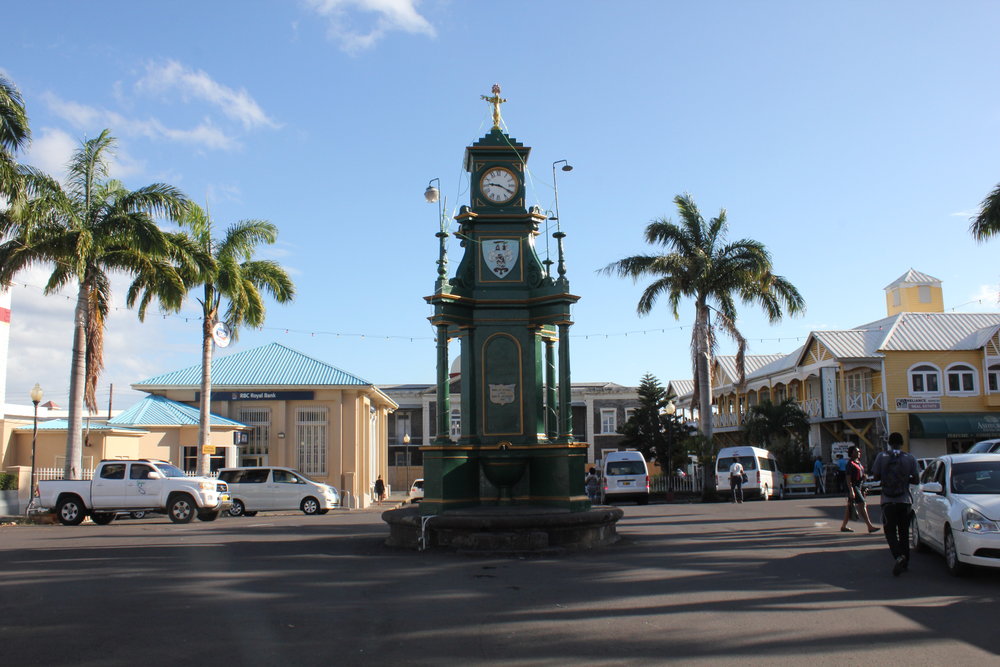
Downtown Basseterre – Clock tower
Next Time in St. Kitts
Our very enjoyable visit to St. Kitts was coming to an end the next day, so the cab ride back to the resort gave us ample opportunity to reflect on our trip. There’s still plenty of things we’re leaving for next time. After making light work of Sir Timothy’s Hill this time around, we’d love to venture up Mt. Liamuiga, the highest peak on the island. We would obviously want to visit St. Kitts’s other half, Nevis, as well, since it’s a very quick ferry ride away and apparently has many features that make it unique. I had also really wanted to try Sky Safari, an adrenaline-fueled zipline canopy tour high above the Kittitian woodlands, but a combination of poor weather and poor budgeting meant we had to shelve that for our next visit. Oh well, all the more reason to come back soon!
Conclusion
The Brimstone Hill Fortress National Park was definitely one of the highlights of the trip. The amazing views from atop its bastions are unparalleled, and its central role in many key episodes of the history of St. Kitts affords a fantastic opportunity to learn more about the forces that shaped the island nation as it is today. I would actually recommend looking into renting a vehicle for your visit in order to enjoy the site at your own pace; while its convenient to take the Half Island Tour, the 2.5-hour timeframe can definitely limit your experience.




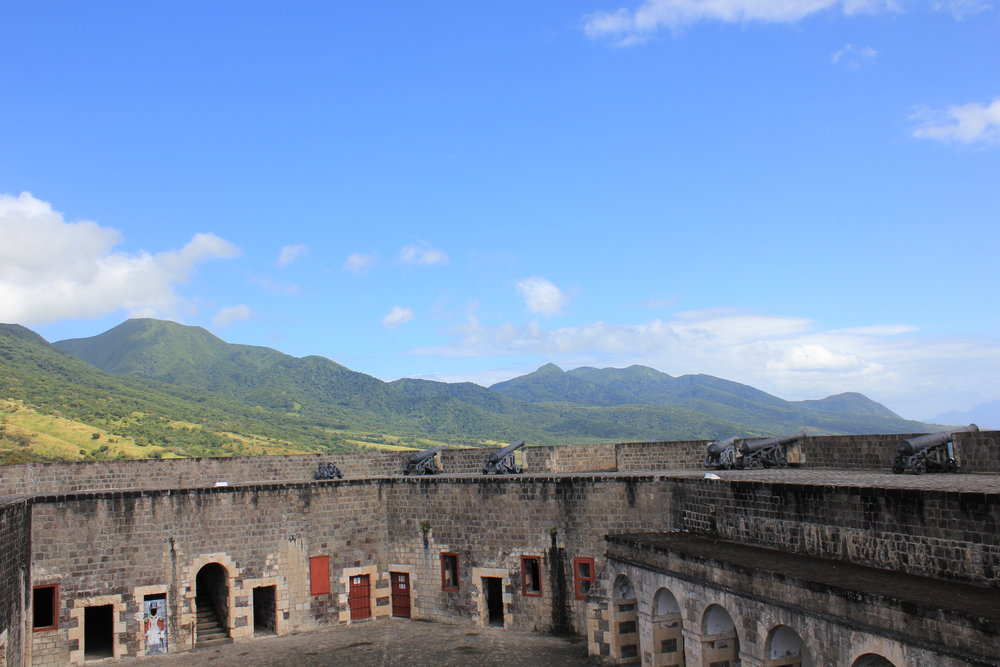














Thanks Ricky. Our cruise ship stops in St Kitts tomorrow. Will probably hit the fort and one of the beaches that has a bar.